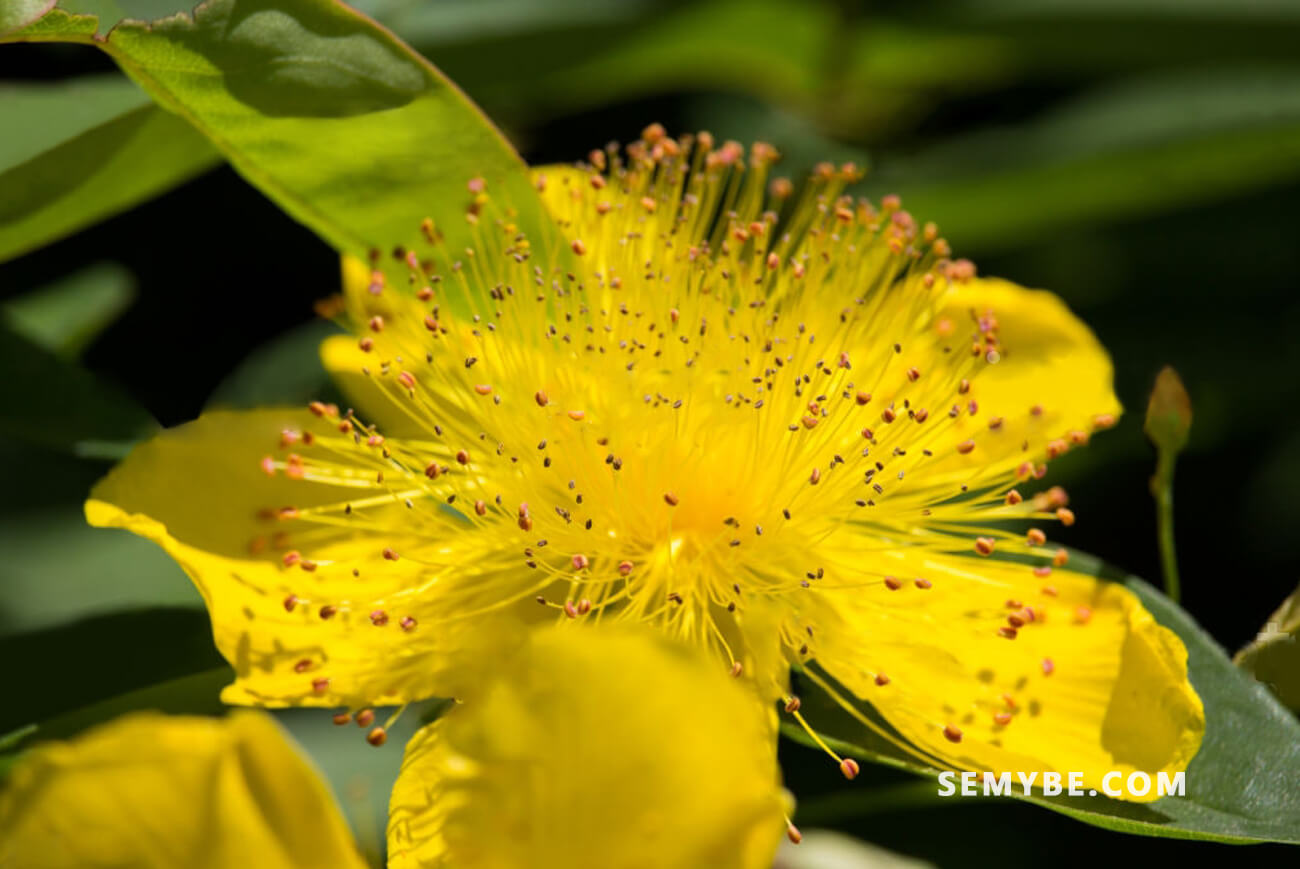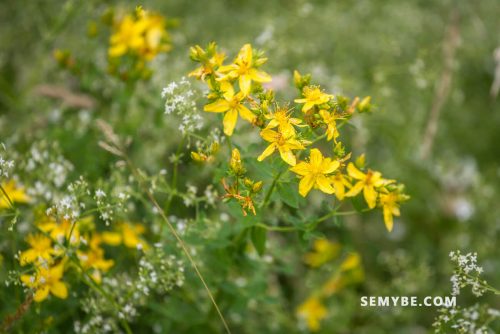
Hypericum Perforatum
1. History and use
Originally from Europe, St. John’s Wort grows in many temperate regions of the world It is cultivated by sowing in the spring or by division of the rhizome in autumn. The flowering tops are harvested in the middle of summer was known as a devil’s hunt that drove evil spirits away, a plant used in white magic.
Two thousand years ago, St. John’s wort was already recommended to treat melancholy, but also to treat wounds, infections or St. John’s wort takes its name from its appearance, because against the light of day and the leaves give the impression of being pierced with thousands of holes.
2. Description of the plant
St. John’s wort is a perennial herb up to 90 cm tall (20 to 90 cm), which likes dry, sunny spots, and the stem is reddish in color, with oval leaves opposite each other. The fruit is a capsule that opens in three parts. What looks like small holes are glandular organs containing the essential oil. The flowers are pentamerous (corolla five petals), a bright yellow color. They give off a slight fragrance of incense when one crushes a flower or stalk, a red substance flows.

3. Curative action
- Nervousness
This plant is an excellent remedy for nervous disorders. It has been used for a long time because of its tonic effects on anxiety states that cause tension, insomnia and depression.
- Menopausal disorders
It treats conditions related to hormonal changes, such as fatigue.
- Tonic properties
This plant is an effective hepatic and biliary tonic.
- Cicatrisant
The red oil is an excellent antiseptic by external way, heals wounds and burns, and relieves toothache, cramps. It’s neuralgia internally, calms inflammations of the stomach, gastric ulcers.
4. Uses
For the treatment of depression or mild depression, it takes between two and four weeks of treatment for the effects of St. John’s wort to be felt. It is important to seek the advice of a doctor before to take a treatment.
In infusion: put 2 to 4 g of dried flowers in 150 ml of boiling water for 5 to 10 minutes. Drink three times a day to fight against sleep disorders.
St. John’s wort oil: for massages and poultices to heal wounds and relieve burns, use one part dry plant for ten parts olive oil. Apply this preparation on injured parties one to three times a day Massage with this oil to relieve cramps and neuralgia.




